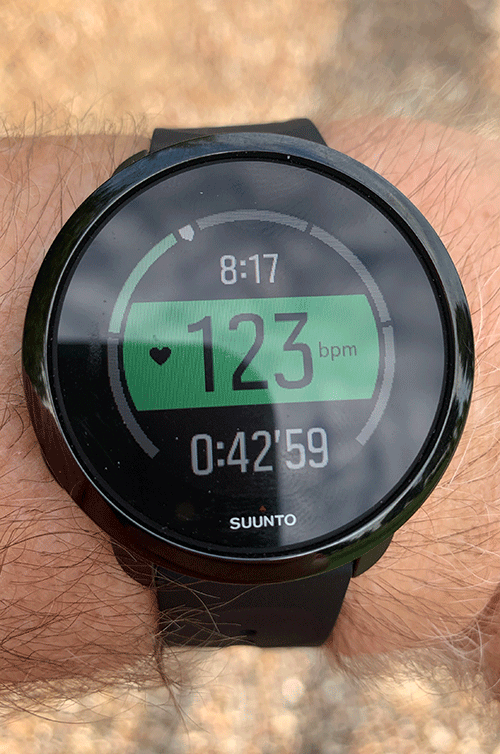This represents a change from my regularly planned posts today, but yesterday Mark Sisson posted a nifty video covering a few details of how his fitness routine has changed over the years. We all have to customize, customize, customize – but this is damned interesting, and hopefully will invoke a deeper, thoughtful look at your own routine.
Fitness
My Newest Travel Workout: The Three Card Flip (or Deal Me Three) Workout

About a month ago a friend, who happens to travel what seems like endlessly for his work, shared with me a workout hack his wife had stumbled across at her gym – the Three Card Flip Workout, though my buddy and his wife called it the Deal Me 3 Workout.
That said, low and behold the same concept surfaced last week in GQ’s Level Up email newsletter (worth a subscribe if you don’t read it already); from the newsletter –
…I’ve been thinking about that idea in a different context recently: exercise. Specifically in reference to my favorite workout hack, something I’ve (very creatively) coined the Three-Card Flip. Pull three playing cards from a deck—the first is the number of push-ups that you’ll do; the second card is the number of bodyweight squats (or lunges, for variety); the third is the number of leg lifts. (Jack, queen, king = 11, 12, 13; Ace = 1…or 14, if you’re a hardo.) Do it all the way through the deck—17 times, in total—and about 20 minutes later you’ll have done 360-plus push-ups, bodyweight squats/lunges, and leg lifts in total. The Three-Card Flip is my go-to on days when I don’t have time to do a longer workout—and it usually leaves me with a similar post-exercise high. (Highly recommend if you’re traveling and you don’t know what your schedule might look like, or if you’ll have access to a gym.)…
I’ve used this a few times now on the road, and even on a day when I need a shorter, intense, HIIT additional workout to meet my targets during a lighter day when weather or schedule intervened.
I’ve been incorporating simple body weight movements for each of the three, typically some combination of pushups, pull-ups, squats, lunges, toe raises, or squat-toe raise combo moves and trying to get through the “deck of exercise” in something close to 20-minutes or less.
Customize to suit your fitness level and capacity, and keep on dealing…
Useful Gear: Tracking Heart Rates
 Today’s post is somewhat of a follow-up to a Question of the Day post back on 4 June about target heart rates; I talked back then about the critical differences between thinking about target maximal heart rates and target aerobic training heart rates.
Today’s post is somewhat of a follow-up to a Question of the Day post back on 4 June about target heart rates; I talked back then about the critical differences between thinking about target maximal heart rates and target aerobic training heart rates.
By the way, if you’re not as familiar with the concept of target aerobic training heart rates, spend a bit of time reading Dr. Phil Maffetone’s work on the topic – here’s a great introduction to the topic on his site. (I still think his 180 formula is sheer genius and a great starting place for just about any and everyone considering an aerobic training program.)
There are a host of great wearable trackers out there – that’s my own Suunto Fitness 3 from a recent walk above – including those from Garmin, Fitbit, and Suunto for example, as well as many of the big-tech watches/wearable devices (like an Apple watch).
As I’ve progressed in my own fitness, I’ve found the heart rate tracking feature particularly helpful to make sure I’m getting into my aerobic training zone during my get-the-day-started early walks, and later when doing my (more often than not) twice-weekly sprint workouts tracking heart rate recovery for pacing all-out sprint efforts.
Tangentially, on the advice of a mentor in the health, wellness, and fitness game, my wife and I have even been tracking the impacts of different foods on sleep quality and nighttime heart rates (here’s looking at you, dark chocolate squares after dinner) – some consistent and reproducible patterns appear to be evolving. I’ll be sharing more down the road…
At least from where I sit, for most of us, choosing a specific device isn’t the critical issue; your budget in fact, and your interest (and/or ability) to take a deep dive into a new tech device (some of which are impressively complicated), may be the more critical limiting factor.
Clearly some of us in the ancestral health and fitness world tend to be a bit compulsive about data tracking and can lose sight of the big picture behind the avalanche of data before us; take care to not venture too far on the data analytics limb.
A useful rule of thumb I offer clients, and used to offer patients is this: never pursue testing or data tracking unless you expect the findings to have a genuine impact on how your manage your day, diet, training, etc.
Tracking your training heart rate will have a meaningful impact on how you approach your fitness, and is a great place to start if you’ve not been harvesting any training related data at all.
A Short Roundup on Plantar Fasciitis
The Quick Backstory
As part of my own condition and wellness program, I’ve been walking 30 to 35 miles per week now for about five months, typically walking six of seven days per week and enjoying my time on the trails immensely.
About three weeks ago, pushing through a new facet of my resistance training, I tweaked my left sacroiliac joint and began to experience what typically was a nuisance mechanical lower back and left posterior pelvic pain about 25-30 minutes into a ninety minute walk.
Determined to push on through, I kept up my routine (minus the newer resistance component), monitoring my discomfort, without much difficulty. At one time I questioned whether or not I was having to adjust my gait significantly; I didn’t think so…
That all changed about ten days ago, when I seemingly woke up “out of the blue” with a fairly impactful left plantar fasciitis, which worsened impressively with that morning’s walk.
Those symptoms have sent me scrambling to review the current thinking in management of plantar fasciitis, which I’ve been implementing with reasonable success over the past ten days. My plantar fasciitis episode has clearly been multifactorial in origin (the gait pattern change above, shoes at the end of their functional life, slacking off on calf/leg/hip stretching over the past couple of months, and potentially even some terrain and trail changes altering foot stresses).
I don’t have time to delve into plantar fasciitis comprehensively here this week, though I thought it might be useful to post a few useful videos and references now, and we’ll come back and deal with PF in more detail at a later time.
A Few Very Useful Plantar Fasciitis Links and Vids
How to Treat Your Plantar Fasciitis Naturally – Dr. Phil Maffetone and team; very well done, downloadable PDF
Plantar Fasciitis – Fix Your Feet! from the StrategicAthlete, good vids included
How to Cure Plantar Fasciitis – October 18 post on Mark’s Daily Apple
2 Stretches to Heal Plantar Fasciitis – video by Brad Kearns; note his explanation re: bent vs straight knee is reversed, but otherwise well done and core essential stretching
Plantar Fasciitis from MobilityWOD/Kelly Starrett; very well done…
More to come; don’t waste another day if you’re suffering from PF and haven’t made any progress in your rehab and recovery.


